Post-war German jeeps
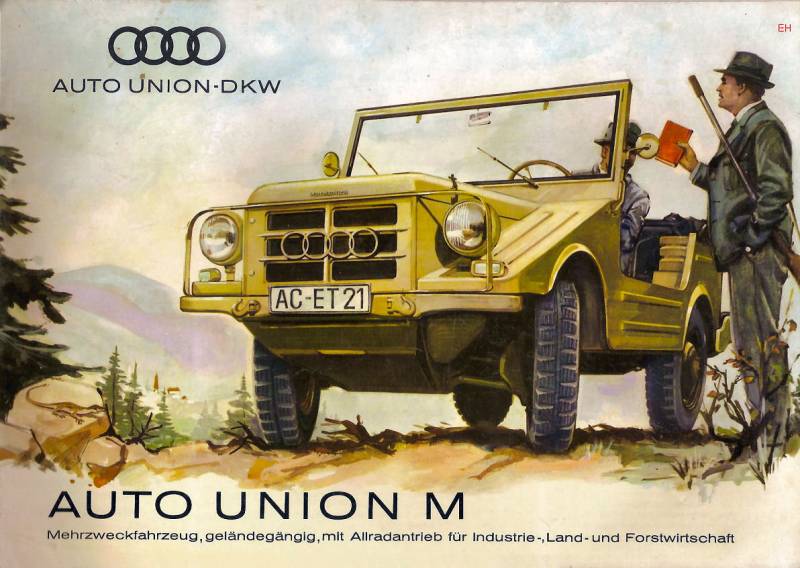
we were no longer talking about technically flawless
and impressive vehicle design,
simplicity and a large margin of safety were important here.
W. Oswald
What is a Jeep?
We very often use the word "jeep", without even thinking: what does it mean? The brave automobile journalists succeeded especially strongly in this matter, striving to call every all-wheel drive station wagon with increased ground clearance that turned up under their hot creative hand as a jeep. What is the meaning of this magical word that enchants and stirs the blood of every true lover of four-wheel drive cars?jeep"?
The word "jeep" was often used in Soviet technical literature and was a "semi-official" term denoting a certain type of vehicle - a light reconnaissance vehicle with an open body of the now forgotten "phaeton" type, accommodating 4-5 fighters (including the driver) or two fighters and a load weighing about 250 kg.
The first Soviet jeep was GAZ-64, put into small-scale production at the end of 1941 (a total of 672 pieces were manufactured).
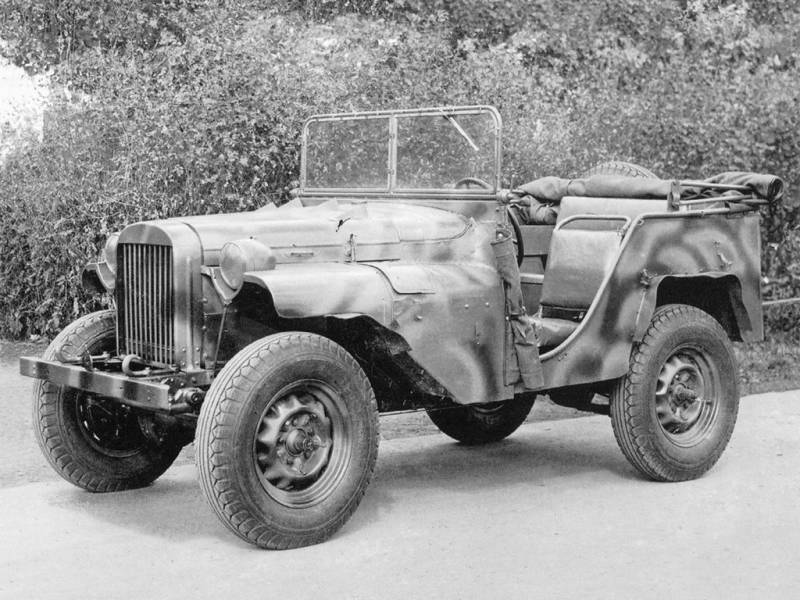
In 1943, by upgrading the GAZ-64 (the engine power and the track of the drive axles were increased), a new Soviet jeep was designed GAZ-67.
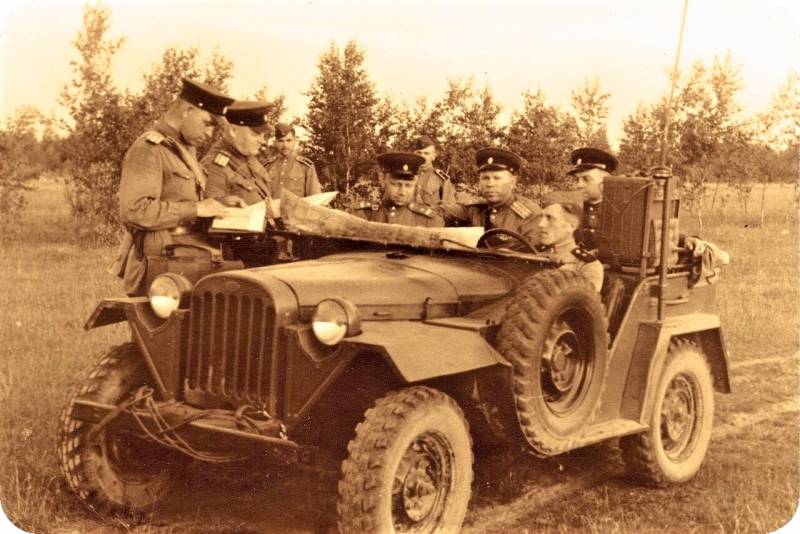
For the period from the start of production until May 9, 1945, 4 GAZ-851 and GAZ-67B were produced.
But the most massive jeep of the Red Army during the Great Patriotic War was the one that arrived in the USSR from the USA under the Lend-Lease agreement "Willis-MV" (aka "Ford GPW"). In total, about 40 Jeeps arrived from overseas in the USSR (in the form of finished cars and vehicle kits):

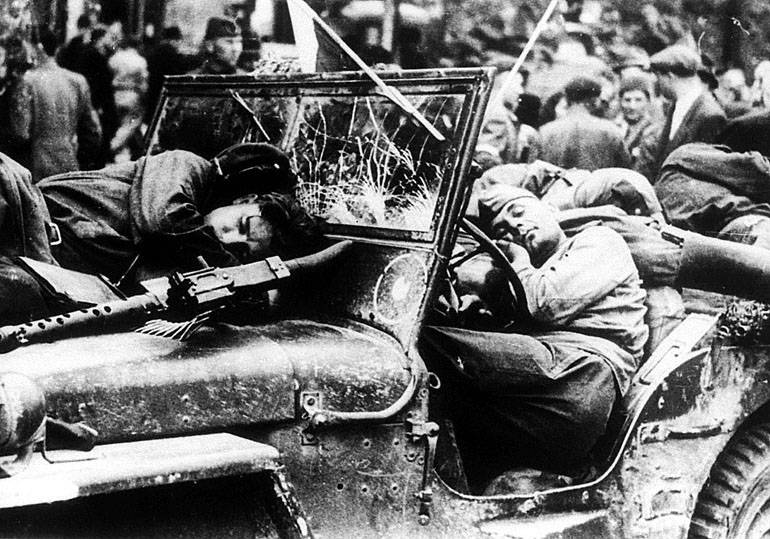
The inhabitants of the city recaptured from the Nazis rejoice, and their liberators, exhausted to death, soldiers of the Red Army, sleep soundly in the American "Willis". Eternal memory to them - eternal glory!
On the design features of jeeps of the Second World War
Both American and Soviet jeeps of the Gorky Automobile Plant had rigid drive axles and spring suspension. This circumstance gave rise to the false conclusion in the minds of many people that, they say, all jeeps of the Second World War were equipped with a dependent suspension. This is not entirely true, or rather, not at all.
In World War II, jeeps (light connected reconnaissance and patrol vehicles) with independent suspension of all wheels were also used.
The proud Germans were especially successful in this matter, mockingly referring to the American design school and striving to achieve such high technical perfection in the development of their machines that careless Americans did not even dream of (and we must pay tribute - they succeeded).
Unlike the United States, where only one jeep model was developed before the war, German engineers designed as many as three different models of light reconnaissance vehicles, all of which had independent wheel suspension:
1) KDF-82,
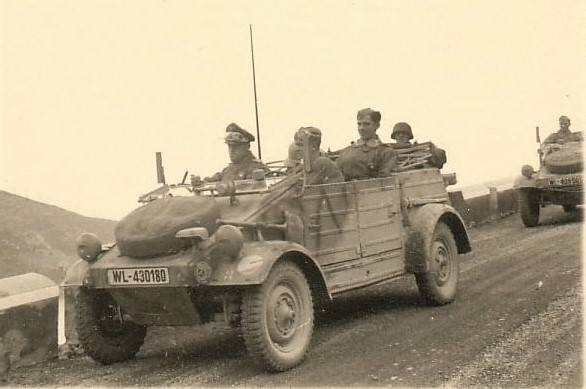
2) KDF-166,
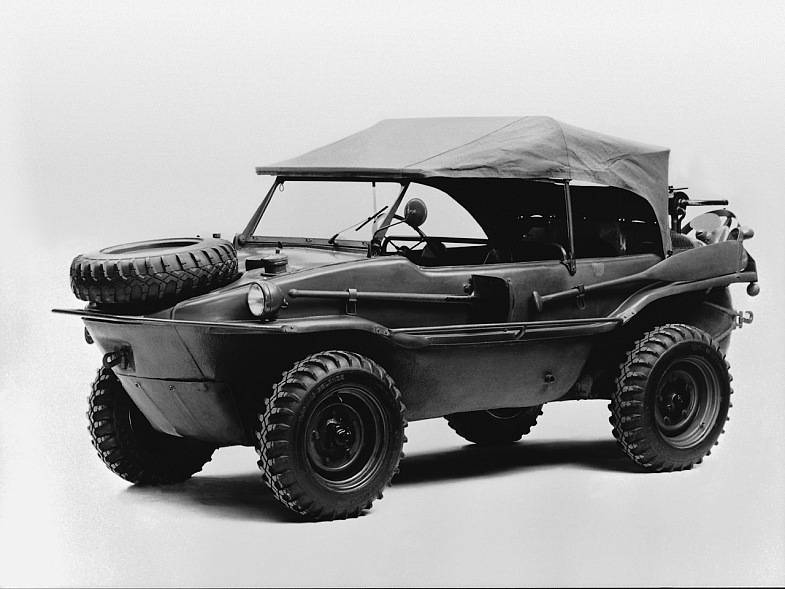
3) a typical standardized reconnaissance vehicle manufactured by BMW, Shtever and Hanomag.
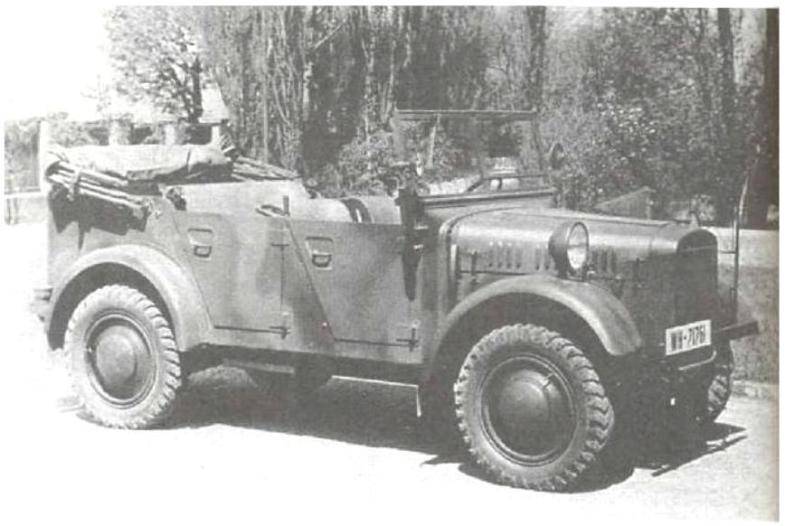
A typical car has proven itself not from the best side. Its design turned out to be overcomplicated, breakdowns often occurred, the machine required laborious maintenance, and as a result, its production was curtailed in 1943.
But the KDF-82, developed in the design bureau of the famous Ferdinand Porsche, was produced until the end of the war and was recognized as the best German army jeep. Another graduate of the Porsche design bureau, the KDF-166 amphibious vehicle, also performed superbly, its high cross-country ability is still legendary.
Post-war German jeeps
But then came 1945, Germany played the war.
The defeated Third Reich was divided by the winners into 2 parts: the western, which became the FRG, and the eastern, the GDR. In addition to the fact that many German cities were ruins, the destruction of all economic ties of the former united country was a big disaster. The Germans were artificially divided into "Eastern" and "Western", two states emerged, hostile in ideology.
Both countries struggled with devastation for a long time, but the innate diligence of the Germans little by little did its job - the two Germanys, like a fabulous Phoenix bird, were reborn from the ashes.
And in 1954, the government of Germany was firmly convinced that the country had already grown strong enough and it was time to re-form its own armed forces - the Bundeswehr. According to rough estimates, about 10 light reconnaissance vehicles with a 000x4 wheel arrangement were required for the resurgent army. It was tempting to take the simplest path: to buy Willys M4 from the United States.
But the German government acted very wisely, deciding to entrust the development and production of cars to domestic automobile firms. This solution had the following advantages:
1) allowed to inject financial flows not into someone else's, but into their own economy;
2) get rid of foreign dependence in the supply of spare parts for future cars;
3) create new jobs for its citizens.
This is what the correct state (and not selfish) approach is.
In 1954, a tender was announced for the supply of light reconnaissance vehicles to the Bundeswehr, in which three West German automobile companies took part: Goliath, Porshe and Auto Union. In the same year, they developed, assembled and provided the military with prototypes of new German jeeps for road tests.
Experienced machines of the company Goliath were designed with a front independent suspension and a rear axle in the form of a solid beam.
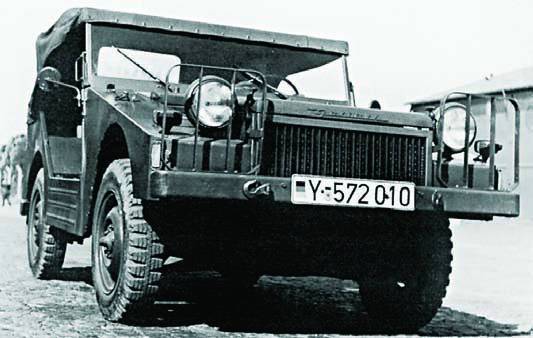
And on the jeeps of Porshe and Auto Union firms, independent suspension of all wheels (articulated drive axles) was used.
Опытный Porsche 597 Jagdwagen:
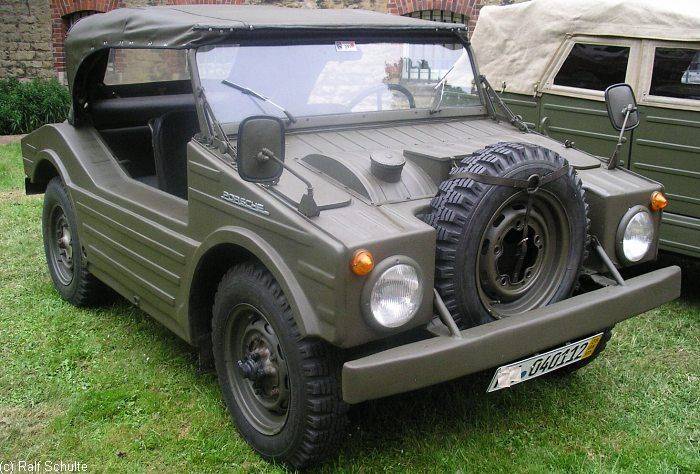
All presented samples of cars had many shortcomings, firms gradually eliminated them, and as a result, the tender was won by the firm Auto Union. It is believed that the main reasons for winning the tender were the lowest price and the company's large production capacities, which make it possible to launch serial production of the newly-minted German jeeps as soon as possible. But some jokers stated that the military was captivated by four interconnected rings, flaunting on the radiator lining:
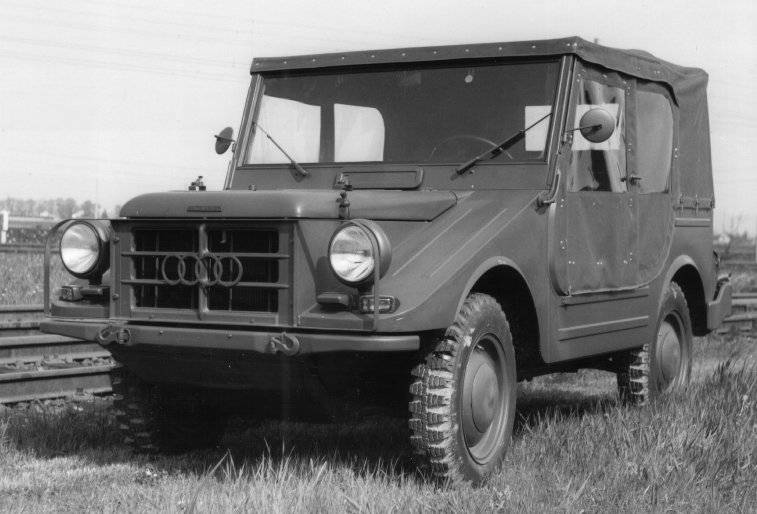
The first post-war German jeep from Auto Union (photo above) with independent suspension on all wheels, which later received the name Munga (from the abbreviation Mehrzweck Universal Gelandewagen mit Allradantrieb), was put into production in 1954 and produced by 1968 a total of 46 pieces. Of these, 450 were gladly adopted by the Bundeswehr, and the remaining vehicles were distributed among peaceful public services.
The Germans had colossal front-line experience behind their backs, in the last war they suffered a lot with the repair and maintenance of vehicles with independent suspension, but nevertheless the fact remains: they made the first post-war jeep with articulated drive axles.
This car was good for everyone, but the overall splendor was greatly spoiled by a two-stroke engine, which requires the addition of special oil to gasoline. As a result, during the combustion of the fuel mixture, a cloud of asphyxiating gas was released, and when moving in a convoy, the infantrymen who followed the car often experienced bouts of intoxication.
It is noteworthy that in the cars, at first, a blocked interaxle drive was used (without an interaxle differential) with the possibility of detaching the rear drive wheels from the power flow. At the same time, the car became front-wheel drive (this solution was later applied by Soviet designers in the development of the military transporter of the leading edge of the TPK, which became a civilian LuAZ-969).
But in 1956, for some reason, German engineers abandoned such an interaxle drive scheme and organized an even more original one.
Simplifying the design of the gearbox to the limit, they eliminated the mechanism for disabling the rear drive axle, and Munga began to be produced with a non-switchable blocked drive of two drive axles, which caused a deterioration in agility and unnecessarily loaded the power drive mechanisms on paved roads. Probably, there was no other car with this type of center drive before or after.
The first post-war German jeep proved itself so well that in 1976 the command of the Bundeswehr turned to the leadership of the Volkswagen concern (which owned the DKV plant in those years) with a request to develop a new modern German jeep by modernizing the Munga. The leadership went to meet the wishes of the generals, and soon Audi engineers designed an excellent lightweight and maneuverable reconnaissance vehicle with independent suspension of all wheels, similar in design to the Munga suspension, in which transverse springs served as an elastic element.
The car that got the name polecat (Ferret), went into serial production in 1978, was met with a bang by the military and was produced until 1988.
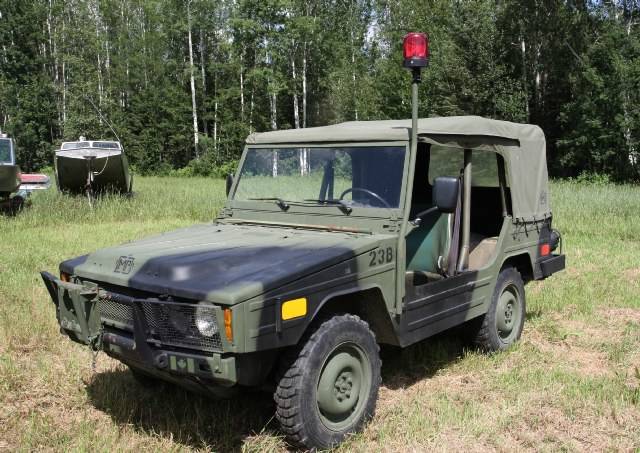
It is curious to note that in 1981 a Canadian company acquired a license for the production of this model. Bombardier and launched the production of these jeeps under its own emblem for the Canadian and Belgian armies.
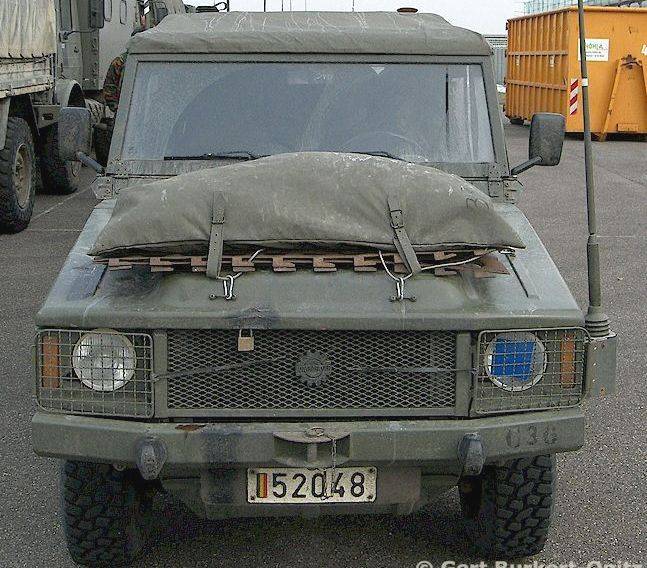
When developing a new jeep, an unfortunate miscalculation made during the design of Munga was corrected - a two-stroke 3-cylinder engine was replaced with a four-stroke power of 75 hp. With. The center drive scheme was also changed: off-road, a blocked center drive was used, and when driving on hard roads, it was possible to turn off the front drive axle, and the car became rear-wheel drive.
In addition, following the long tradition of the German design school, the engineers abandoned the use of a demultiplier in the transfer case (in the Munga RK there was a reduction gear number 1,604), and its functions were assigned to the reduction gear number 7,603 additionally introduced into the gearbox. It was used on difficult off-road conditions and during long-term movement of cars in a convoy when they were driving next to soldiers who were stomping on foot.
First Jeep of the German Democratic Republic
In the early 50s. (according to various sources, either since 1952, or since 1955) at the plant IFA the production of the first East German all-wheel drive jeep was launched R2M.
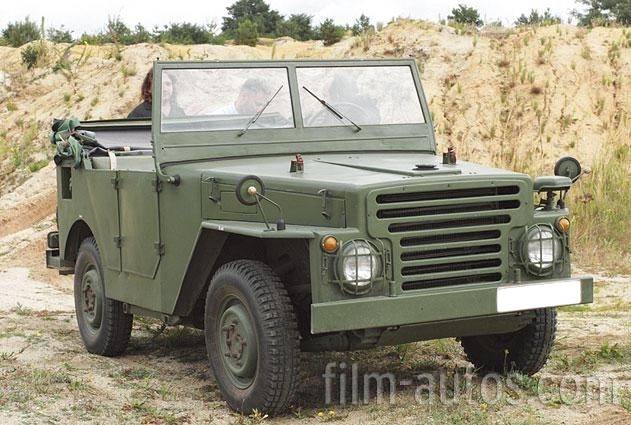
It is curious to note that the transfer case of the car provided for 3 positions of the lever that changes the modes of operation of the center drive:
1. Extreme rear, in which all the torque between the drive axles was redistributed to the rear axle.
2. Middle position: the distribution of torque between the drive axles was carried out by an asymmetric center differential in the proportion of 36,3% to the front axle and 63,7% to the rear axle.
3. Extreme front: the torque was distributed to both axles, while the center differential was locked.
For driving in difficult off-road conditions in the transfer case there was a demultiplier (downshift). A self-locking worm differential was installed in the rear axle of the car.
An independent suspension was used in the car, a transverse spring served as an elastic element.
Production of the R2M was completed in 1958, with just over 2 produced, so this car is only known to auto historians.
Final conclusion
From the foregoing, a reasonable conclusion can be drawn: all jeeps that served in the Wehrmacht during World War II, as well as those designed in Germany and received by the Bundeswehr in the first 35 post-war years, including the first post-war jeep of the GDR, had independent wheel suspension.
Is it possible, based on this circumstance, to conclude that the use of articulated axles for a jeep is a more correct engineering solution than designing a suspension on rigid beam bridges?
Well, of course not. The use of one or another engineering solution in the development of a jeep is due to a variety of reasons: a feature of the country's existing design school; the desire of the manufacturer to ensure the maximum possible unification of the created machine in terms of components and assemblies with serial models; specific customer requirements, etc.
And to conclude which engineering solution is better and which is worse, based only on the total number of produced cars where such solutions were applied, is the easiest way to fall into error.
The most massive jeep of the Second World War is considered the American "Willis", 626 of them were assembled. But few people know that when designing it, the designers worked in a hurry and did not do it the best way, but the fastest, simplest and cheapest way.
And many people call the KDF-82 the best jeep of the Second World War, which was also designed taking into account the maximum possible unification with the Volkswagen-38 production model, that is, as cheaper, but Ferdinand Porsche, who created it, so skillfully thought out the design of the car that this light rear-wheel drive car with a road with a clearance of 290 mm, it was practically not inferior in cross-country ability to the Willis, and surpassed it in other operational properties.
Which once again proves the well-known truth: a cross-country passenger car designed for operation both on and off-road is the most complex technical design, which is subject to numerous, sometimes mutually conflicting technical requirements. And not every designer manages to reconcile them among themselves, and at the initial stage of designing a car, to find the only true engineering concept, which in the end will help turn the car he created into a legend.
And those few designers who succeeded in this in the best possible way, together with their four-wheeled offspring, forever entered the world automotive industry. history.
And we will never forget their names...
Note. When writing the article, some information was used from the books of E. D. Kochnev “Military vehicles of the Wehrmacht and its allies”, “Red Army vehicles 1918–1945”, as well as V. Oswald “Complete catalog of military vehicles and tanks Germany 1900-1982".
Information